Human Circulatory System: Introduction
- The circulatory system is composed of the main parts namely:- The heart
- The blood
- The blood vessels
- The blood is used to transport various substances within the body.
- The blood vessels are tubes or channels that the blood flows through. The blood vessels include: arteries, veins and capillaries.
The Heart
Study the parts of the heart shown below:
Parts of a Heart - Image Courtesy of iStock
- The upper chamber is called auricle while the lower chamber is called ventricle.
- Each chamber is divided into two parts.
(i) Right auricle/atrium
(ii)Left auricle/atrium
(iii)Right ventricle
(iv)Left ventricle
Functions Of Parts Of The Heart
Auricles / Atria
- These are the upper chambers.- Auricles receive blood from different parts.
- Right auricle receives blood without oxygen from all parts of the body.
- Left auricle receives blood with oxygen from the lungs.
- Auricles have thin muscles.
Ventricles
- These are the lower chambers.- They receive blood from the auricles and pump it outside the heart.
- Right ventricle receives deoxygenated blood from right auricle and pumps it into the lungs for oxygenation through pulmonary artery.
- Left ventricle receives oxygenated blood from the left auricle and pumps it to all parts of the body through the aorta.
- The heart is connected to other body parts through the blood vessels.
Note:
- The left ventricle has stronger muscles than right ventricle.
- The heart has valves to prevent backflow of blood.
- The left auricle is also called the left atrium while the right auricle is also called the right atrium
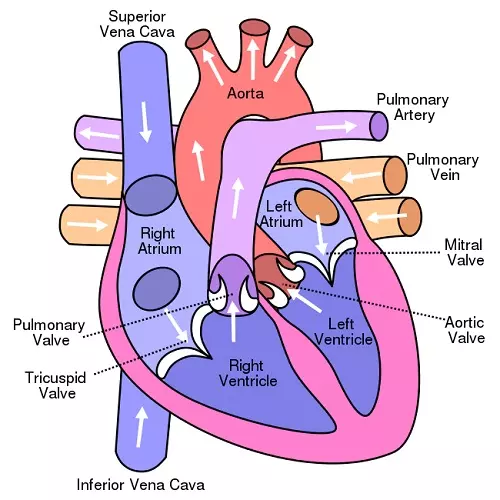
Blood Vessels in the Heart and Their Functions - Image Courtesy
Examples Of Blood Vessels In The Heart And Their Functions
Pulmonary artery: - Carries blood without oxygen (deoxygenated) from the heart to the lungs.Aorta: - It is the main artery. It carries blood with oxygen (oxygenated) to the rest of the body.
Vena cava: - It is the main vein that receives blood that has no oxygen (deoxygenated blood) from the rest of the body and carries it to the heart.
Pulmonary vein: - It carries blood with oxygen from the lungs to the heart.
Types of blood vessels and their functions
- The blood vessels are used to transport blood in the body.- There are three main types of blood vessels.
- They include: arteries, veins and capillaries.
Arteries
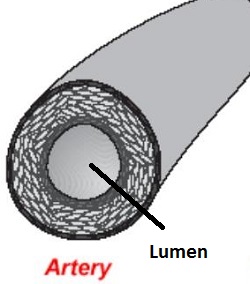
Cross Sectional Area of an Artery - Image Courtesy
- They carry blood away from the heart.
- They are located deep in the skin.
- They have thick walls and narrow lumen where the blood flows under very high pressure.
- All arteries carry oxygenated blood except pulmonary artery.
- They have no valves.
Veins
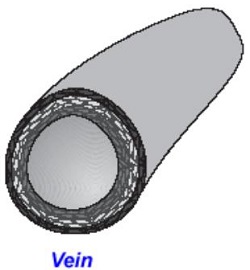
Cross Sectional Area of a Vein - Image Courtesy
- They carry blood to the heart.
- They are located near the skin.
- They have thin walls and wide lumen where blood flows under low pressure.
- All veins carry deoxygenated blood except the pulmonary vein that carries blood with oxygen.
Capillaries
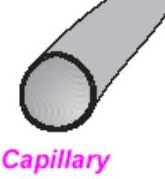
Cross Sectional Area of a Capillary - Image Courtesy
- They are spread all over the body.
- They have thin walls and have no valves.
The Blood
- The blood is made up of four components:- Plasma
- White Blood Cells
- Red Blood Cells
- Platelets
Functions of Plasma
- It is the liquid part of blood.- It is used in transportation of:
- Other blood cells.
- Waste materials.
- Digested food.
- Heat and hormones.
Functions of White blood cells
- They protect the body from diseases.Functions of Red blood cells
- They contain haemoglobin which is a red colouring matter.- Haemoglobin combines with oxygen for transportation.
Functions of Platelets
- They help in clotting of blood.- Clotting of blood prevents excess loss of blood after an injury.
Importance Of Blood Circulation In The Body
- The movement of the blood from the heart to the other parts and back to the heart is called blood circulation.- The blood circulation is important since it helps in transportation of:
- Digested food from the ileum to other body parts.
- Oxygen from the lungs to other body parts.
- Carbon dioxide from the body parts to the lungs for removal.
- Excretory wastes from the body cells to the excretory organs.
- Heart from the body cells to all body parts.
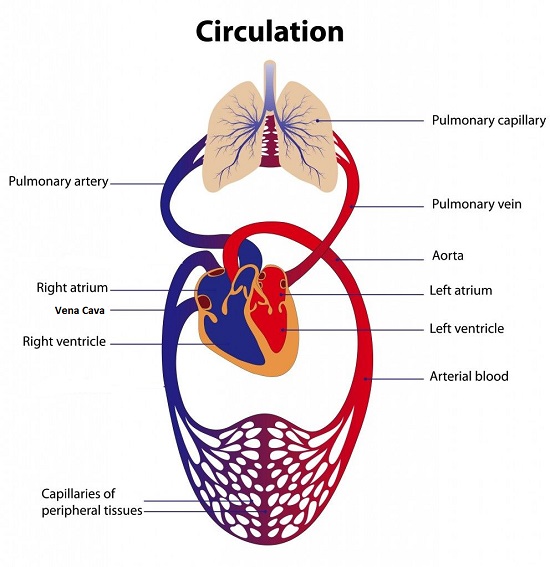
Blood Circulation System - Image Courtesy
Blood Groups
- A human being has four main blood groups. These blood groups are:- Blood group A
- Blood group B
- Blood group AB
- Blood group O
Importance of blood groups during blood transfusion
- Blood transfusion is the process in which blood from one person is given to another person.- Blood transfusion involves the giver and the receiver.
- The person who gives blood during transfusion is known as the donor.
- The person who receives blood during transfusion is known as the recipient.
- During blood transfusion, it is important to know the blood group of the donor and the recipient.
- A donor can only give certain blood groups and a recipient can also receive blood from some specific donors.
- The table below shows the blood groups, the donors and the recipients.
| Blood Group | Donates 2 | Receives From |
|---|---|---|
| Group A | A and AB | A and O |
| Group B | B and AB | B and O |
| Group AB | AB only | All Groups |
| Group AO | All Groups | O only |



